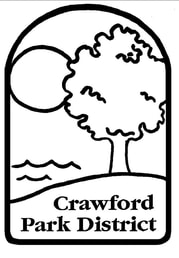What is Beech Leaf Disease?
Beech leaf disease (BLD) is a newly discovered novel disease inflicting our native American Beech (Fagus grandifolia) trees and several non-native beech trees including European Beech (Fagus sylvatica) and Oriental Beech (Fagus orientalis). BLD was first discovered by Biologist John Pogacnik in Lake County, Ohio in 2012. To date, BLD infestations has been restricted to the northeastern portion of Ohio as well portions of several other states including Connecticut, Massachusetts, New Jersey, Rhode Island, West Virginia, Pennsylvania, New York, and Ontario, Canada. After conducting research to determine the cause of BLD, it appears that the disease has been linked to a newly recognized subspecies of nematode (Litylenchus crenatae mccannii). According to the U.S Forest Service, nematode infection mechanisms are poorly understood at this time and require further research. Research thus far has shown that the nematode is associated with buds and leaves of all ages classes. The ODNR Division of Forestry has received funding from the U.S. Forest Service to work with various partners within Ohio, other states and Canada to monitor the spread and document the impact of BLD to help inform research efforts and create management tools.
Here is a video of Biologist, John Pogacnik, at ground zero for the discovery of Beech Leaf Disease in Lake County Ohio discussing BLD and how he came to realize there was something effecting beech trees.
Here is a video of Biologist, John Pogacnik, at ground zero for the discovery of Beech Leaf Disease in Lake County Ohio discussing BLD and how he came to realize there was something effecting beech trees.
What are Symptoms of BLD?
Symptoms of BLD include dark striping or banding on otherwise healthy-looking leaves; shriveled, discolored or deformed leaves; and reduced leaf and bud production. Once infected, leaves opening in the spring will immediately show dark banding. Stripes are still visible on remaining leaves in the winter. Disease progression varies with tree size, but BLD appears to kill small trees within several years. No infected tree has ever been known to recover. BLD is not to be confused with beech blight aphids or eriophyid mites.
Click here to view a BLD fact sheet from the U.S Forest Service.
Click here to view a BLD fact sheet from the U.S Forest Service.
How Do I Report BLD?
Recently, Cleveland Metroparks has released protocol for citizen scientists to assist monitoring Beech Trees across Ohio for the ODNR and the U.S. Forest Service. This monitoring program is intended to provide researchers/scientists with data on the location and spread of BLD across Ohio and the eastern United States region. You can find a link to this protocol here.
ODNR also urges Ohioans to report BLD. Reports of BLD will be documented to inform future research and to monitor changes in forest composition and structure. Landowners in northeast Ohio are encouraged to report any signs of BLD. Additionally, landowners are urged to avoid moving beech trees or tree parts to prevent BLD from potentially spreading to new areas.
To report BLD, contact ODNR Forest Health Program Administrator Tom Macy at [email protected] or use the BLD section of the NE Ohio Parks app available at parkapps.kent.edu.
ODNR also urges Ohioans to report BLD. Reports of BLD will be documented to inform future research and to monitor changes in forest composition and structure. Landowners in northeast Ohio are encouraged to report any signs of BLD. Additionally, landowners are urged to avoid moving beech trees or tree parts to prevent BLD from potentially spreading to new areas.
To report BLD, contact ODNR Forest Health Program Administrator Tom Macy at [email protected] or use the BLD section of the NE Ohio Parks app available at parkapps.kent.edu.

